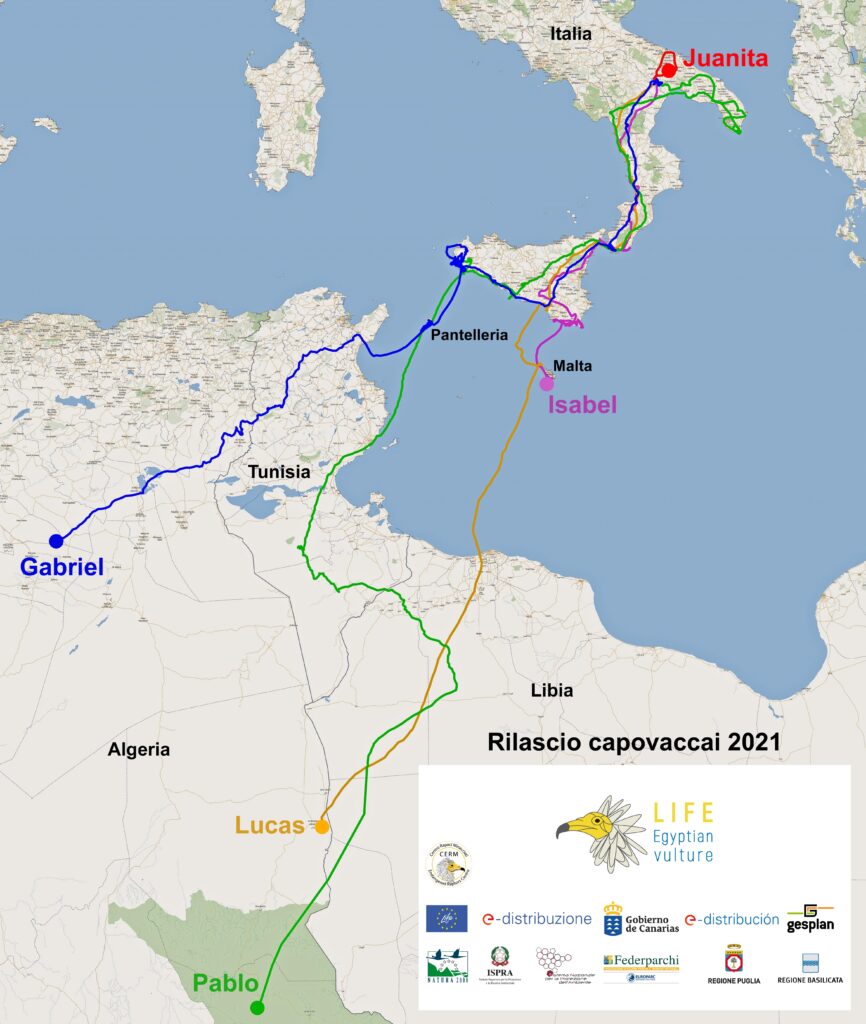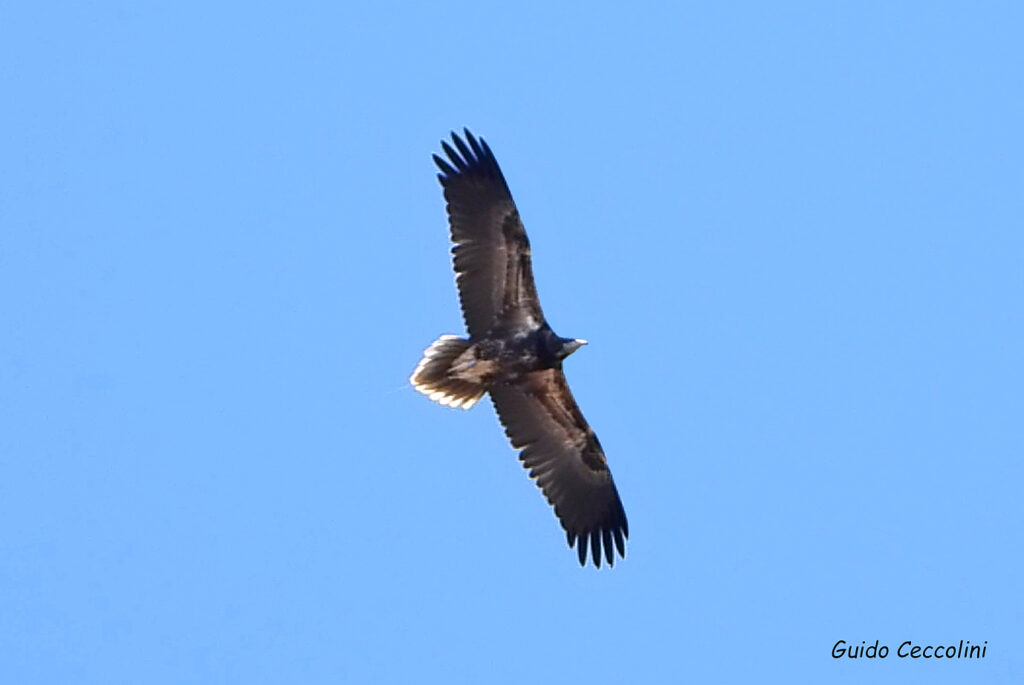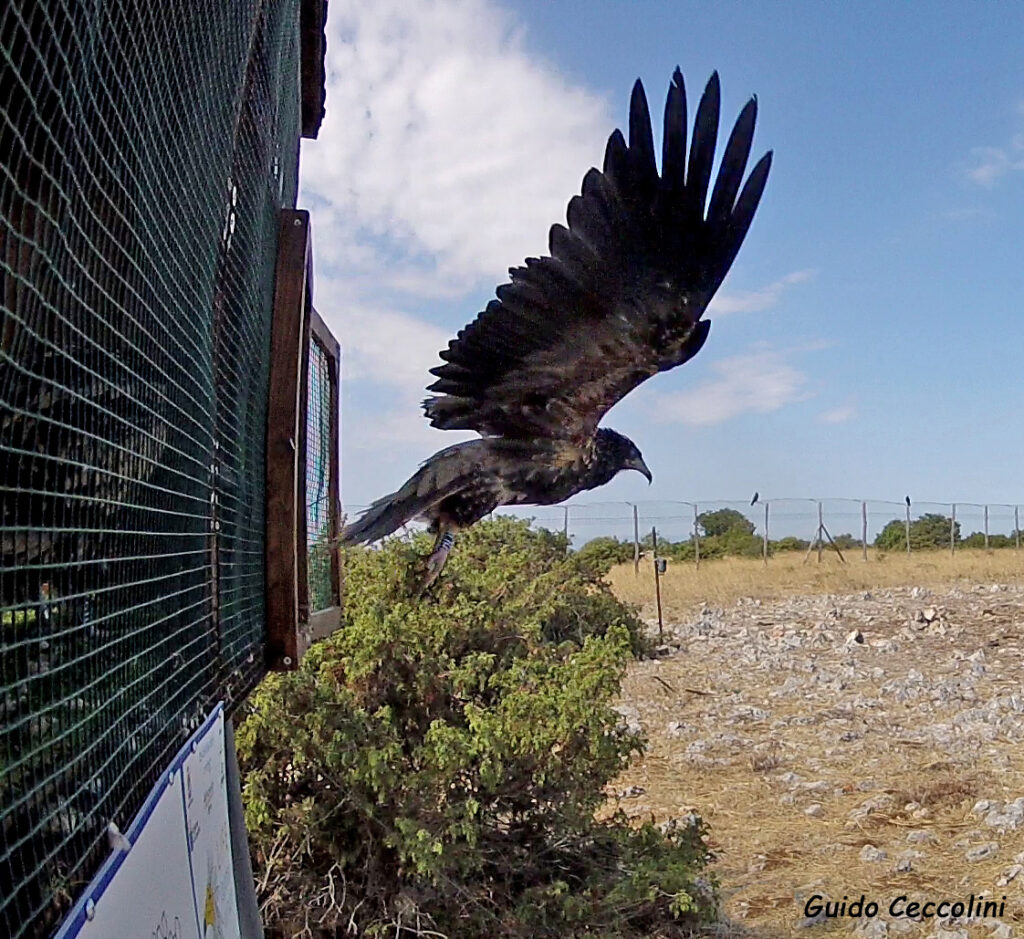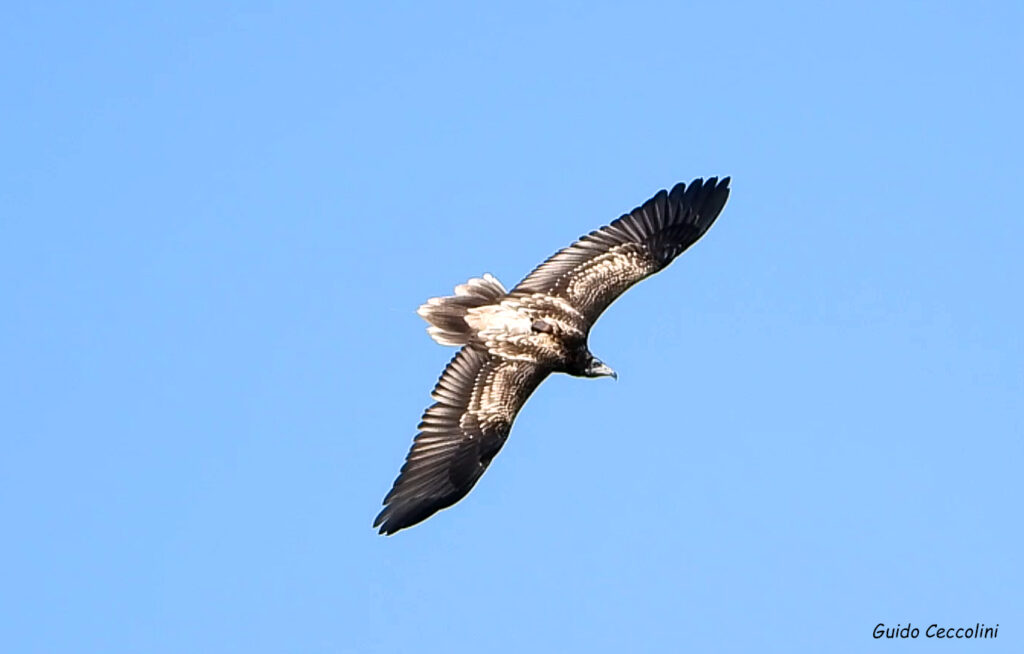Between the end of August and the beginning of September 2021, four out of the five young Egyptian vultures released in the Murgia Materana Park started their first autumn migration. As of September 22nd, 2021 Pablo, Lucas and Gabriel are in Algeria and continue their journey to sub-Saharan Africa while Isabel suffered a terrible fate during the migration.
The movements of the Egyptian vultures are constantly monitored by ISPRA and the CERM Association thanks to the GPS they are equipped with and the support of the VCF (Vulture Conservation Foundation). As long as they remained in Italy, the young vultures were also kept under direct control by the Forestry Carabinieri and by numerous volunteers distributed between Puglia, Basilicata, Calabria, Sicily and the Island of Pantelleria.

Pablo left the Murgia Materana Park on 29 August and arrived in Sicily on September the 3rd; after following the western coast of Sicily in a northerly direction, on september the 7th at 9.31 he headed towards Pantelleria and, without stopping on the small island, he continued towards Tunisia, arriving there at 17.45 (350 km traveled in 8,15 hours of flight).

Gabriel and Lucas left Basilicata on September the 3rd, Lucas reached Sicily two days later and the following day arrived on the island of Gozo (Archipelago of Malta), flying over the sea for 152 km. He spent the night on the island. At 6.40 am on 7 September a person with two dogs made him fly up and immediately afterwards repeated rifle shots were clearly heard which made fear the worst. Local ornithologists, who were on the spot precisely to prevent the Egyptian vulture from being the target of criminals, witnessed the episode.The archipelago of Malta is, in fact, well known for the serious acts of poaching committed against migratory birds belonging almost exclusively to protected species.

For several hours, Lucas’ GPS sent no signals and this led to fears that the Egyptian vulture had been injured or that his GPS had been damaged. Fortunately, subsequent signals revealed that Lucas had rushed away, at a speed of 63 km per hour, from the place where the rifle shots were fired and then made a stop on a cliff not covered by the telephone signal, necessary for the data transmission of the GPS, and unreachable by those who wanted to shoot it down. It became clear that Lucas was really safe when about three hours later (9.37 am) he quickly resumed the sea route and headed for Libya. At 7.15 pm the young vulture had alighted on a pylon near Tripoli, after flying uninterruptedly over the sea for 384 km.
Gabriel crossed the Strait of Messina on September the 6th and continuing his migration along the western coast of Sicily arrived in the province of Trapani. On September 12 at 10.51 he left Sicily and at 13.51 he reached the island of Pantelleria (118 km on the sea). The Egyptian vulture stayed there for two days, supervised by the Forestry Carabinieri of the new National Park. On September 14, with a flight of 154 km, he reached Tunisia and from there continued towards Algeria.

Isabel, the youngest of the four Egyptian vultures, was the last to leave the Murgia Materana Park on September 6. Arrived in Sicily on September 10, the young female stopped there for a few days and then, unfortunately, chose the riskiest route to Africa, the one that passes through the Maltese archipelago. This choice was fatal: the same evening she arrived in Malta, on September 14, Isabel disappeared and everything indicates that she was shot and killed. A following news will tell what happened in detail.


